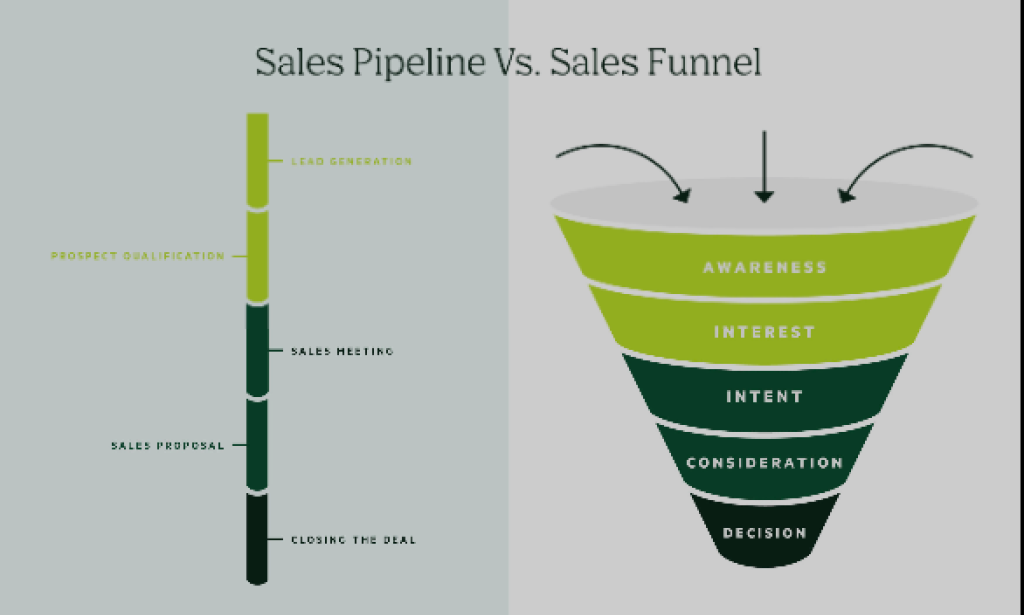The Sales Funnel: A Roadmap to Revenue
Imagine your business as a bustling marketplace. Customers wander in, browse, and hopefully, make a purchase. But how do you guide them from being a casual observer to a happy, paying customer? This is where the **sales funnel** comes in – a powerful concept that visualizes and optimizes the customer journey.
Think of the sales funnel as a multi-stage process, like an actual funnel, where a large number of potential customers enter at the top and a smaller, more qualified group emerges at the bottom as paying customers. It's a strategic framework that helps businesses understand where their leads are in the buying process and tailor their efforts accordingly.
**Why is understanding the sales funnel crucial?**
* **Improved Lead Qualification:** Not every lead is a good fit for your product or service. The sales funnel helps you identify and focus on those who are most likely to convert.
* **Optimized Marketing and Sales Efforts:** By understanding each stage, you can create targeted content, campaigns, and sales strategies that resonate with prospects at different points in their journey.
* **Increased Conversion Rates:** By addressing the specific needs and concerns of prospects at each stage, you can smooth the path to purchase and boost your conversion rates.
* **Better Resource Allocation:** Knowing where leads drop off allows you to allocate resources more effectively to address those bottlenecks.
* **Predictable Revenue Growth:** A well-defined sales funnel provides a clearer picture of your sales pipeline and helps forecast revenue more accurately.
**The Stages of a Typical Sales Funnel:**
While the specific names and number of stages can vary depending on the business and industry, a common sales funnel structure includes:
**1. Awareness (Top of the Funnel - TOFU):**
This is the widest part of the funnel where potential customers first become aware of your brand, products, or services. They might be experiencing a problem or have a need, and your brand is presented as a potential solution.
* **Activities:** Content marketing (blog posts, articles, videos), social media marketing, SEO, public relations, advertising, webinars, podcasts.
* **Goal:** Attract a broad audience and generate interest.
**2. Interest (Middle of the Funnel - MOFU):**
In this stage, potential customers have moved beyond initial awareness and are actively seeking more information. They are exploring different options and learning about your offerings in more detail.
* **Activities:** Website visits, downloading e-books or guides, subscribing to newsletters, attending webinars, engaging on social media, reading case studies.
* **Goal:** Educate prospects, build trust, and position your brand as a credible expert.
**3. Desire (Middle of the Funnel - MOFU):**
Here, prospects are starting to develop a preference for your solution over competitors. They understand the benefits and are starting to envision how your product or service can solve their specific problem or meet their need.
* **Activities:** Product demonstrations, testimonials, comparing features, reading reviews, personalized email communication, free trials.
* **Goal:** Build desire and highlight the unique value proposition of your offering.
**4. Action (Bottom of the Funnel - BOFU):**
This is the crucial stage where the prospect is ready to make a purchase. They have evaluated their options and are deciding whether to convert.
* **Activities:** Making a purchase, signing up for a service, requesting a quote, contacting sales, filling out a contact form.
* **Goal:** Convert prospects into paying customers.
**Beyond the Purchase: The Importance of Post-Purchase Stages**
While the traditional sales funnel often ends with the purchase, it's increasingly important to consider the stages that follow. These stages are crucial for customer retention, loyalty, and generating repeat business:
* **Retention:** Keeping existing customers happy and engaged.
* **Loyalty:** Turning satisfied customers into brand advocates.
* **Advocacy:** Encouraging customers to recommend your business to others.
**Building and Optimizing Your Sales Funnel:**
Building a successful sales funnel requires careful planning and continuous optimization. Here are some key steps:
* **Define Your Target Audience:** Understand your ideal customer's demographics, interests, challenges, and buying behavior.
* **Map the Customer Journey:** Visualize the steps your target audience takes from initial awareness to becoming a customer.
* **Create Targeted Content and Offers:** Develop content and offers that are relevant to each stage of the funnel.
* **Implement Tracking and Analytics:** Use tools to track how leads are moving through the funnel and identify where they are dropping off.
* **Analyze and Optimize:** Regularly review your data, identify bottlenecks, and make adjustments to improve conversion rates at each stage.
* **Align Marketing and Sales:** Ensure seamless communication and collaboration between your marketing and sales teams.
**Conclusion:**
The sales funnel is more than just a theoretical concept; it's a practical tool that empowers businesses to understand, manage, and optimize their customer acquisition process. By visualizing the customer journey and tailoring your efforts to each stage, you can build stronger relationships with potential customers, increase conversion rates, and ultimately, drive sustainable revenue growth. So, if you haven't already, it's time to embrace the power of the sales funnel and pave a clearer path to success for your business.

So educative
You must be logged in to post a comment.